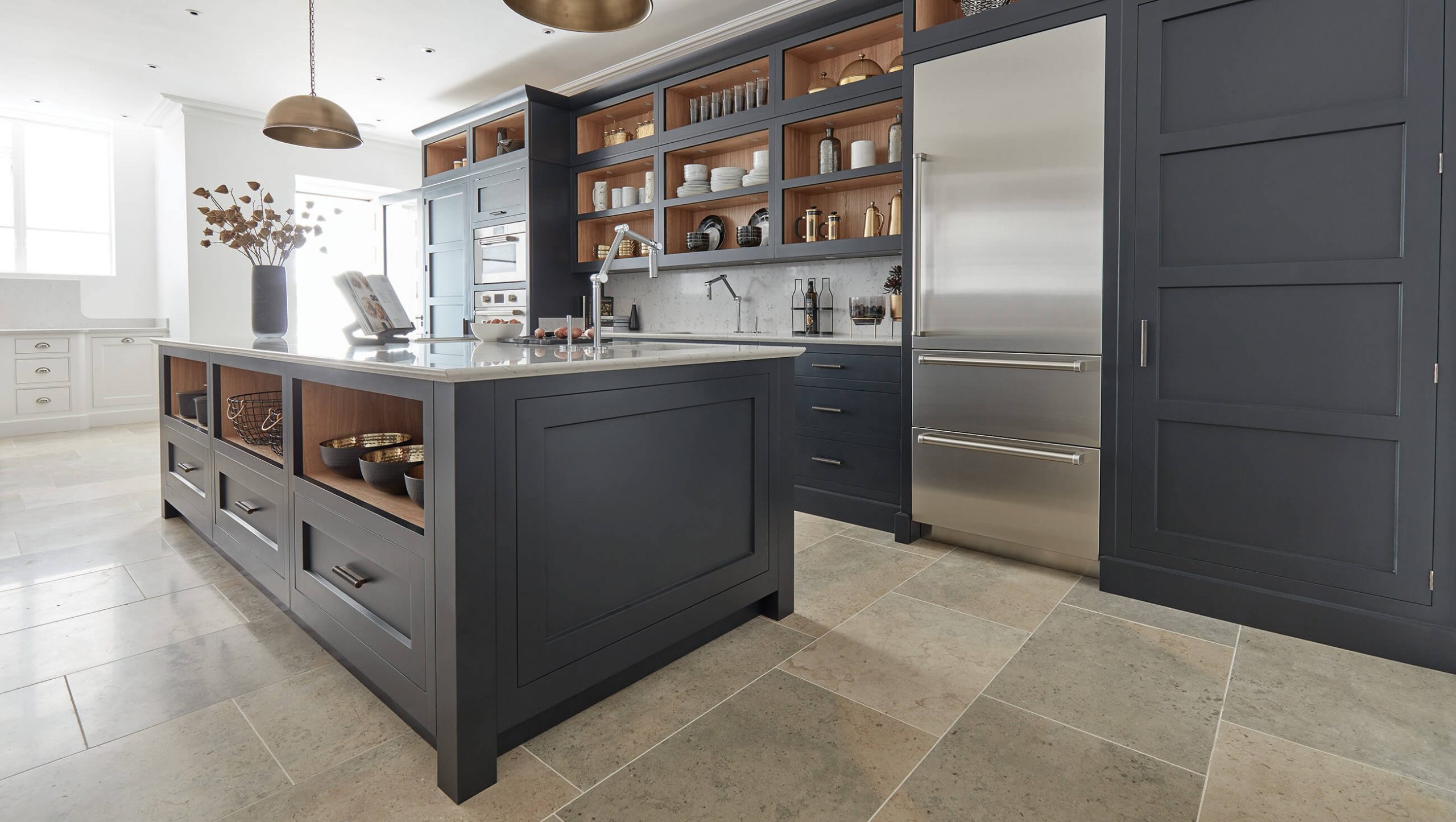

The question of kitchen flooring is one of the most frequently asked amongst Tom Howley’s clients. For years we have worked with Pure Stone to transform homes up and down the country. Their variety of natural stone and porcelain tiles combined with years of experience make choosing the right flooring for your home an easy, enjoyable task.
A successful kitchen design demands a floor that scores highly in terms of practicality and durability. It also has to be aesthetically pleasing, contributing to the overall look and feel of the space. If you’re planning a new project and unsure what flooring to choose, our latest Q&A with Pure Stone may be exactly what you need.

Impressive kitchens are often enhanced and framed by beautiful flooring. When choosing a suitable material for your kitchen, you must balance aesthetics with practicality, ensuring the style works with the rest of the room. If the endless variation of natural stones (marbles and limestones) is for you, then pick honed, brushed or tumbled finishes that are easier to maintain than polished finishes. You can also opt for denser limestones and marbles, less prone to absorbing spills. Remember, natural stone will require maintenance, so think about its suitability for the environment. Resealing is necessary every few years, and neutral detergents must be used.
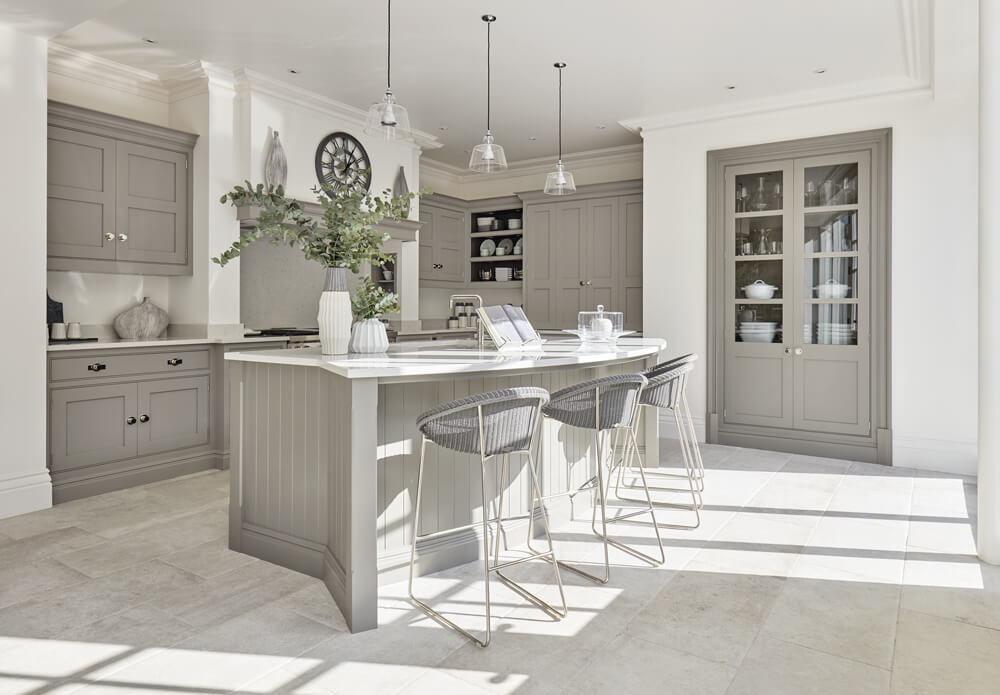
Many busy family homes now favour porcelain tiles as they require very little maintenance. Technological strides in the last few years mean that they are virtually indistinguishable from the natural tiles they are mimicking.
Tiles should always frame the kitchen, so don’t pick anything too overwhelming in terms of pattern as it will compete with your painted kitchen. Neutral colours such as Botticino and Bologna Blanc porcelain go with any of the 24 Tom Howley kitchen colours available as these tiles have a white/grey mushroom base. Yellower stones and tiles are better suited to shades of white and wood finishes.
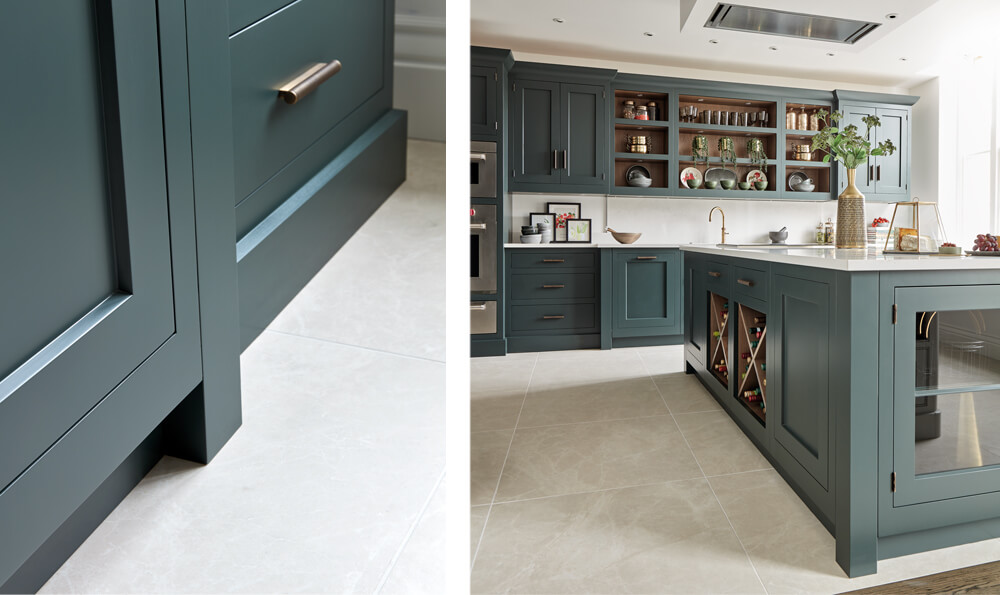
Finishes and edge detail have an impact on selection. If you are going for a country style kitchen, tumbled (a rustic broken edge) or brushed (a rippled textured surface) natural stones create the feel of an aged floor which compliments a more rustic environment.
Nowadays, porcelain tiles also have antique finishes incorporating tumbled or cushioned edges and pitted surfaces that mimic the ageing process. Bologna Blanc and French Reclaimed Avorio are examples of this.
A more modern or classic aesthetic can be achieved using straight cut matt (honed) tiles. Our Blue Beige Limestone and Botticino porcelain exemplify this style, and Botticino, in particular, provides a beautiful marble style background that combines an old-world formality with a contemporary look.
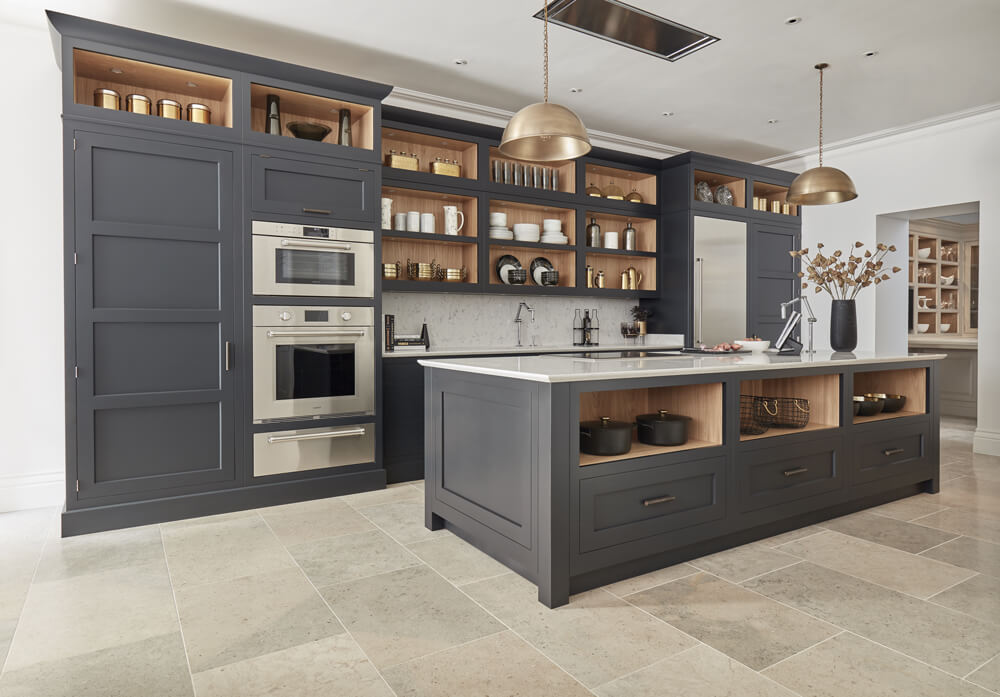
Because porcelain is such a durable material, it is far easier to maintain in a kitchen than wood (it can be mopped, doesn’t discolour when exposed to light, and is far harder to scratch). Porcelain is also a far better conductor of heat than wood and thus works much more efficiently with underfloor warming systems.
There are many options of wood effect porcelain available, but the most popular at present tend to be planks or herringbone. Planks can be pretty large, but in general, a good size is 1200 x 200 laid in an offset quarter bond pattern. Herringbone involves smaller planks (our most popular are 800 x 150) laid in a diagonal pattern. Examples are the warm Oak Herringbone, which is found in the Tom Howley St Albans showroom, and our natural wood effect tile.
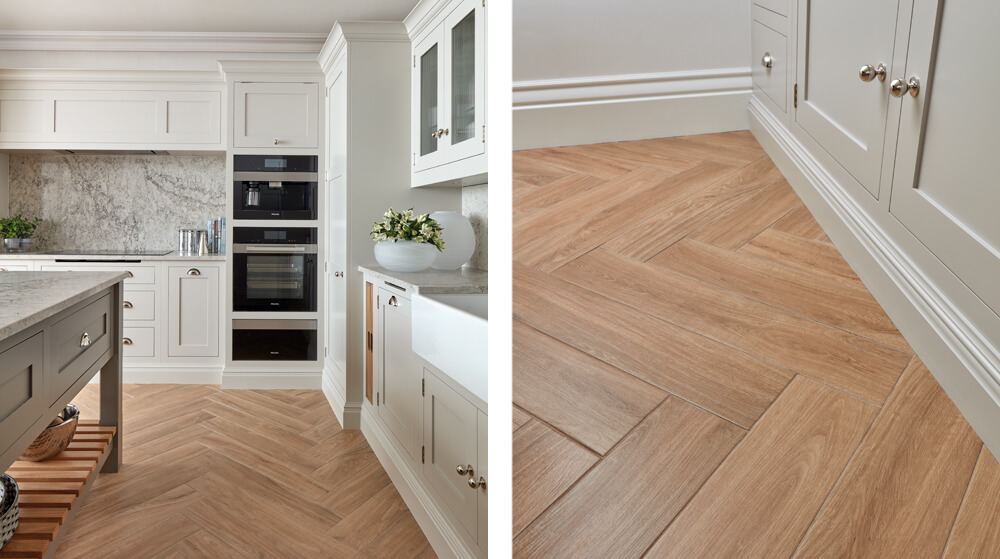
There are no hard and fast rules as to which way tiles should run (if they are rectangular), and it is very much down to personal preference. However, laying tiles along the long edge will create a feeling of length in a rectangular room.
Tile shape also impacts the look of kitchen flooring. Rectangular tiles give a more flagstone aged feel, whereas square tiles are a more formal or contemporary finish. A random length tile or an offset tile pattern can sometimes suit a space that isn’t square as it hides uneven cuts at the edge of a room, whereas a square tile can create a grid of grout lines showing any deviation in walls.
Grout colour can be crucial to the appearance of the tiles and should be a key consideration. There has been an explosion in the colours on offer in the last few years, and it is usually possible to get a colour that works well with the tiles.
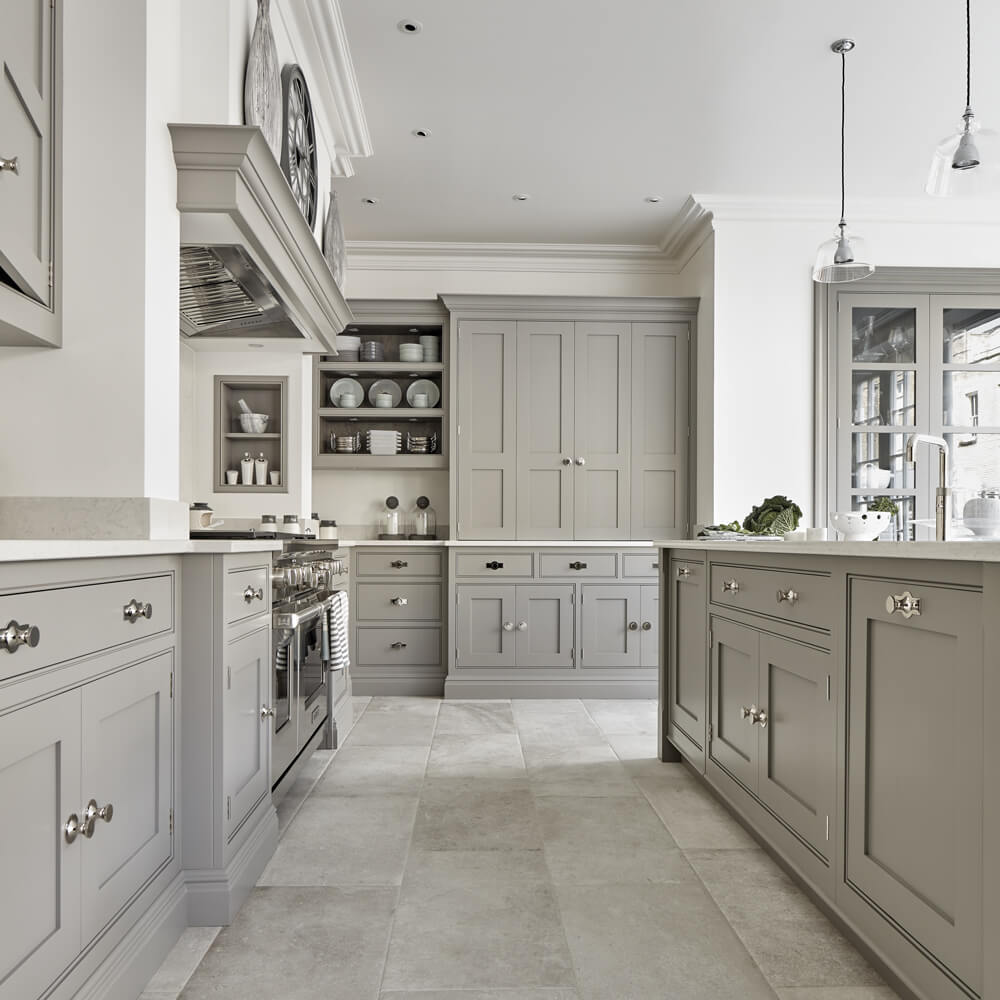
Lighter tiles look best with lighter grout, and it is wise to avoid going darker for practicality. Better to buy a spray and wipe mop which doesn’t darken the grout (mopping with a bucket tends to wash dirt into the grout line). Wood effect tiles require particular thought as getting a grout that matches the tile can be the difference between looking like a wood floor and looking like a tile.
The same advances in digital photography and moulding that have made porcelain versions of marble and limestone so convincing have also meant that wood floors can be duplicated very accurately.
Discover the entire library of Pure Stone’s stunning kitchen flooring here. Pure Stone tiles are also available to view in many of our Tom Howley showrooms, carefully selected to work with our exquisite kitchens on display.